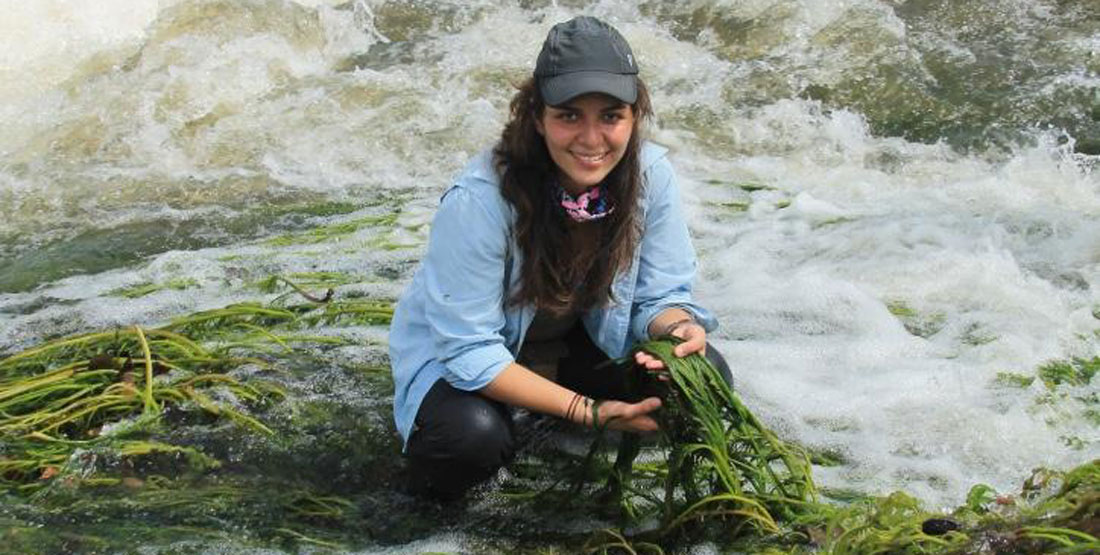Search the Collection
Over 400,000 specimens from the Herbarium collection are accessible through this database and the Consortium of Pacific Northwest Herbaria website. For most vascular plant specimens, only label data are available. Both specimen label data and images are available for most nonvascular plant, fungal, lichen, and marine algae specimens.
Collection Highlights
The Herbarium's total holdings number more than 660,000 specimens of vascular and nonvascular plants, fungi, lichens, and marine algae. The oldest specimens in the collections date to the late 1800s.
Vascular Plants
Fungi
Lichens
Bryophytes
Algae

Our Research
The core mission of the Herbarium is to document, archive, and share information about the diversity and distribution of Pacific Northwest plants, fungi, and lichens.
Documentation occurs through field collection of specimens, archiving is accomplished by the storage of specimens in the Herbarium's collections space, and sharing is achieved through the publication of scientific papers and books, making specimens available through loans to other researchers, and through publishing specimen data through online databases. An excellent example of this effort is the Herbarium's 2018 publication of Flora of the Pacific Northwest, 2nd edition.
Questions & Answers
We’ve pulled together some common questions and answers related to the Burke Museum Herbarium. Do you have question that isn’t answered below? Contact us.
Can I borrow specimens for research?
Specimen loans are made solely to researchers associated with academic and research institutions. Please contact us for more information about specimen loans.
I'm a researcher. Can I visit the collection?
The Herbarium is open to the public for research purposes. There are no exhibits or object displays in the collections. Please note that the Herbarium is not located at the Burke Museum but is a short 15 minute walk south. Contact us for more information about visiting the collections.
Hours
The Herbarium is open Monday to Friday, 8 am to 5 pm, but if you are planning a visit, please contact us to confirm.
Research
The collections are available for research use during normal Herbarium hours. Interested researchers should contact Herbarium Collections Manager David Giblin for more information. Some requests for specimen data can be answered using our collections database and other online resources.
Protocol for visiting
The specimens in this plant "library" are part of the global heritage of research plant materials. Herbarium specimens are fragile, and current use must safeguard their future availability and usefulness.
- All first time visitors to the Herbarium must make an appointment in advance with the Collections Manager. On your first visit you will receive an orientation to the collections.
- Do not bring unfumigated (living or dead) plants into the Herbarium. Dried plant material must be fumigated onsite by freezing for 48 hours. Fresh material, if enclosed in sealed (i.e. Ziploc) plastic bags, may be examined in the Herbarium if it is not removed from the bag.
- Consumption of food and the examination of herbarium specimens is not allowed (see topic of “poisoned” specimens below).
- Please keep the herbarium cabinets closed when not in use.
Annotations
- Make annotations on provided labels with permanent ink (not ballpoint). If you are annotating many specimens, you may paper clip one label as a sample to a folder of specimens and leave the folder on the table. We will print and attach labels to all the specimens in the folder.
- Annotation labels, Pigma (permanent) pens, and glue bottles are available from the Collections Manager.
Do you offer public tours of the collection?
Tours of the Burke’s Plants & Fungi Collection typically cover the history of the Herbarium and collections, how specimens are prepared and organized in the collections, and highlights of the ongoing projects. Adult groups from on- and off-campus are welcome. Visit the Tours page for more information.
Can you help identify something for me?
We are able to provide identifications for a small number of specimens that are sent to us or brought in by appointment. Projects involving a large number of identifications can be arranged on a fee basis. Please contact us for more information.
Can I donate something to the collection?
The Herbarium gladly accepts fully curated (pressed, dried) specimens with label data. Please contact us for more information.
Do you offer internships?
The Herbarium offers academic credit-based internships for undergraduate students at the University of Washington. The specific demands of the internships are worked out with the Collections Manager. Past internships have focused on specimen identification, specimen georeferencing, and botanical illustration. Please contact us for more information.
Earning credits: Each credit requires 3 hours of work per week per quarter, with a 2 credit minimum. At the end of the term, the student must complete a 1 to 2-page summary of the experience.
Schedule: The schedule will be arranged with the Herbarium Collections Manager.
Can I volunteer?
We couldn’t do what we do without volunteers! Visit our Volunteer page for more information about Burke Museum volunteer opportunities and to view current openings.
Our Team & Contact
Meet the people within the Burke Museum Herbarium team.
Have a general question?
Additional Resources
We've compiled several online resources from outside of the Burke Museum that may also be of interest.















